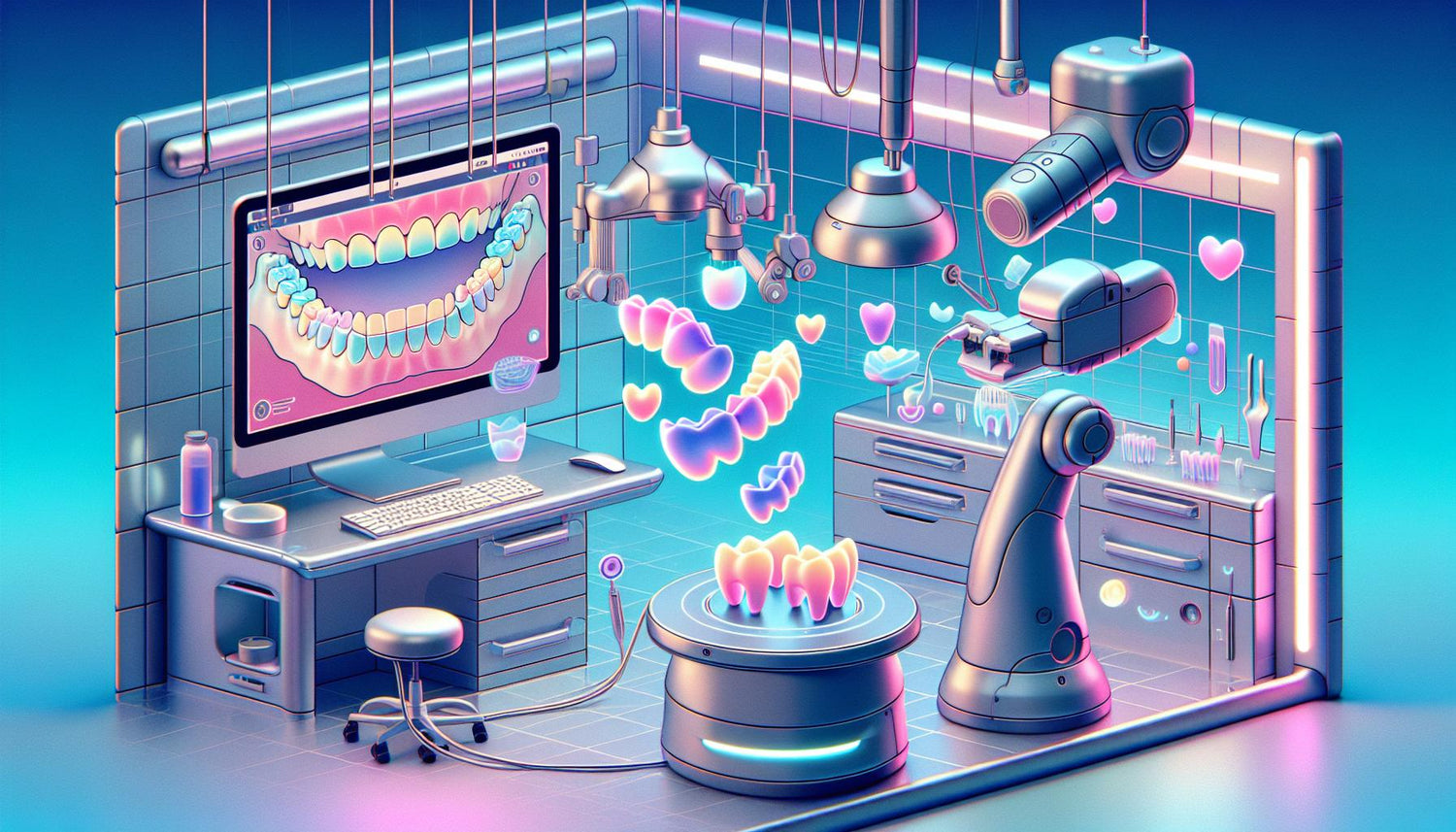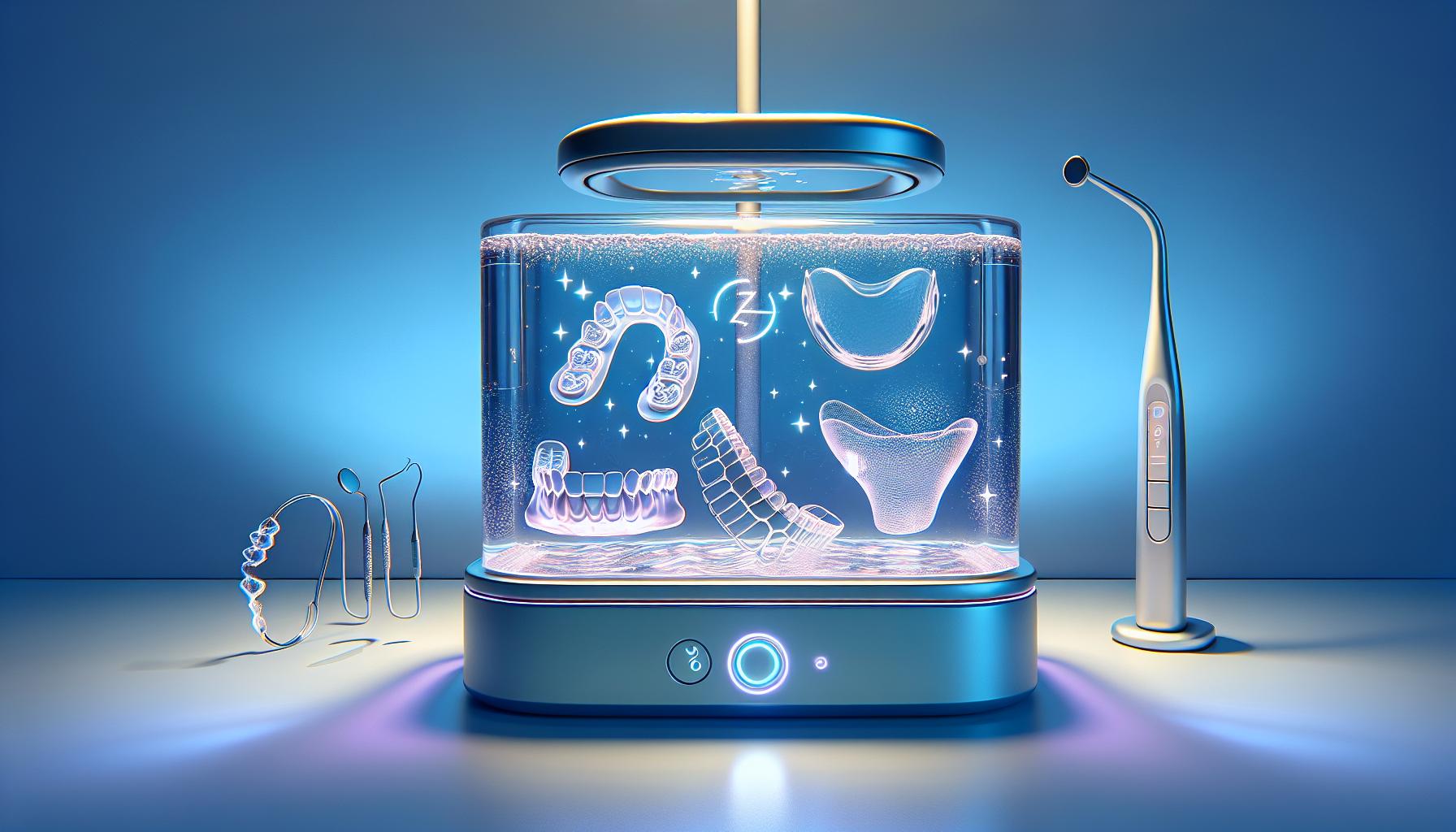In today’s fast-paced world, achieving a confident smile without the hassle of traditional braces has become more accessible than ever. Invisalign offers a discreet alternative that uses a series of clear, custom-made aligners to adjust your teeth gradually over time. But have you ever wondered exactly how Invisalign trays and retainers work? In this article, we explore the fascinating process behind these revolutionary dental products, discussing topics like "how Invisalign trays are made," "Invisalign when to change trays," and, importantly, "where are Invisalign trays made," "where are Invisalign aligners made," and "where are Invisalign retainers made" to bring you a complete inside story.
The Science Behind Invisalign
Invisalign's design is the result of years of research in both dental medicine and material science. Unlike traditional braces, Invisalign treatment involves a series of nearly invisible plastic aligners that are custom-designed for each patient’s dental structure. These aligners gently shift teeth over time, guiding them into their correct positions with minimal discomfort and fewer restrictions on daily activities.
How Invisalign Trays Are Made
Understanding how Invisalign trays are made requires an appreciation of the technology involved:
-
Digital Scanning and Treatment Planning
The process begins with a comprehensive digital scan of your teeth using advanced 3D imaging technology. This scan accurately captures every detail of your dental structure, serving as the foundation for the treatment plan. Dentists and orthodontists work together with digital modeling software to map out a step-by-step progression of how your teeth will shift over time. -
Custom Design and Digital Molds
Once the treatment plan is finalized, the precise movements required to achieve the desired alignment are computed. The aligners are then digitally designed. This design phase includes creating a series of aligners—each slightly different from the previous one—ensuring gradual, continuous movement. This step answers the frequently asked query, "how Invisalign trays are made," as it is a blend of state-of-the-art digital design and precise engineering. -
Manufacturing Process
Specialized manufacturing facilities use high-quality medical-grade thermoplastic materials to produce the aligners and retainers. Advanced 3D printing and thermoforming techniques ensure that each tray fits perfectly and moves teeth incrementally according to the treatment plan. Many people are curious about "where are Invisalign trays made" or "where are Invisalign aligners made." These products are typically manufactured in state-of-the-art facilities located in regions known for precise engineering and quality control. The exact locations may vary, but the manufacturing process adheres to stringent global medical standards. -
Quality Control and Packaging
After production, each aligner and retainer undergoes rigorous quality control. Dentists receive multiple sets of these aligners, ensuring that every patient receives a product that is both safe and effective. The precision during manufacturing is essential to ensure that each tray applies the correct amount of pressure to guide the teeth into place.
The Role of Retainers in Invisalign Treatment
Once your Invisalign treatment is complete, your journey toward a stable, lasting smile isn’t over. Retainers play a crucial role in maintaining the new position of your teeth.
Where Are Invisalign Retainers Made?
Much like Invisalign trays, Invisalign retainers are crafted using advanced digital design and manufacturing processes. These retainers are often produced in the same facilities as the aligners, ensuring that the quality and material specifications are consistent. High-quality materials are chosen to ensure that the retainer remains durable and effective over long periods.
Retainers are custom-made to suit your dental profile. Their primary function is to hold your teeth in their corrected position after the active treatment phase. Hence, understanding "where are Invisalign retainers made" is as important as the knowledge of how they are produced. Both trays and retainers maintain a rigorous production standard for durability and effectiveness.
Managing Your Treatment: When to Change Your Aligners
One of the common questions during Invisalign treatment is, "Invisalign when to change trays?" This is a critical aspect of the treatment plan that affects its overall success.
Timeline for Changing Trays
Digital treatment planning defines how frequently you need to change your aligners. Typically, patients switch to a new set every one to two weeks. However, the specific timeline can vary depending on the complexity of the case and the rate at which the teeth are moving. It is crucial to follow your dentist’s or orthodontist’s recommendations for changing trays to ensure steady progress.
Monitoring Progress
Regular check-ups are recommended to monitor the progress of the treatment. At these appointments, the dentist evaluates the tooth movement and confirms that the treatment is proceeding as planned. Adjustments might be necessary, meaning your professional could modify your schedule for when to change the aligners. Ignoring these scheduled changes can slow down progress or affect the final results.
The Importance of Consistency
Consistency is key to achieving the desired results with Invisalign. Maintaining a strict regimen for when to change your trays is part of the protocol that delivers effective results. By adhering to the planned timeline, patients ensure that their teeth move gradually and safely, minimizing discomfort and reducing the risk of relapse.
Advanced Materials and Technology
The creation of Invisalign trays and retainers is a testament to modern dental technology. Understanding the materials and techniques used can give patients insight into why these products are both comfortable and effective.
Medical-Grade Materials
All aligners and retainers are made of high-quality, medical-grade thermoplastic materials. These materials are not only durable but also designed to be biocompatible, meaning they do not cause adverse reactions when in contact with your oral tissues. Their flexibility and strength make them ideal for the dynamic process of teeth movement.
Cutting-Edge Manufacturing Techniques
The manufacturing process blends precision engineering with advanced 3D printing technology. When considering "how Invisalign trays are made," it's evident that modern technology plays a pivotal role. Techniques such as thermoforming allow the plastic material to be molded precisely over each digitally-designed model of your teeth. This ensures that every aligner is perfectly tailored for its purpose—consistent force application that is essential for gradual tooth movement.
Global Manufacturing Insights
Many patients wonder about the origins of their Invisalign products. Questions like "where are Invisalign trays made" and "where are Invisalign aligners made" evoke a curiosity about the global supply chain of advanced dental products.
Manufacturing Hubs
Invisalign products are manufactured in facilities that are strategically located in regions with advanced technological infrastructures. These facilities adhere to the highest quality standards and often operate within complex logistical networks to ensure rapid production and distribution. This global approach ensures that patients receive products that are safe, reliable, and produced under strict quality control measures.
Ethical and Environmental Considerations
Modern manufacturing processes for Invisalign products not only focus on quality and precision but also emphasize sustainability. Factories are increasingly adopting environmentally friendly processes, minimizing waste, and utilizing energy-efficient machinery. The commitment to sustainability is part of a broader strategy to reduce the environmental footprint while delivering innovative dental solutions.
Transparency in Manufacturing
Patients have grown more interested in knowing where their medical products are produced. Information regarding "where are Invisalign retainers made" and similar questions is often readily available through manufacturer websites or dental care providers. Transparency in the manufacturing process builds trust and reinforces the reliability of Invisalign as a treatment option.
Patient Experience and Success Stories
Hearing about the success of Invisalign treatment can be incredibly reassuring for prospective patients. Many individuals have embraced the discreet nature of aligners and have shared their testimonials highlighting not only aesthetic improvements but also enhanced self-confidence.
Success Through Consistency
A common thread in patient success stories is adherence to the treatment plan. Following the guidelines for "Invisalign when to change trays" and taking care of the aligners through proper cleaning and maintenance ensures that the treatment progresses without hitches. Patients often note that small adjustments over time lead to significant improvements in dental alignment and overall oral health.
The Psychological Impact
The psychological benefits of achieving a straight smile extend beyond mere aesthetics. Patients report feeling more confident in social and professional settings. The discreet nature of Invisalign trays empowers individuals to pursue a better smile without the noticeable appearance of metal braces. The knowledge that these products are created with such precision—from "how Invisalign trays are made" to the care in ensuring "where are Invisalign trays made"—adds a layer of trust and credibility to the treatment.
Practical Guidelines for Invisalign Patients
For those embarking on their Invisalign journey, understanding the nuances of treatment can make the process smoother and more effective. Here are some practical tips and guidelines:
Adhere to the Schedule
One of the most critical aspects of Invisalign treatment is knowing "Invisalign when to change trays." The prescribed schedule is designed to optimize the movement of your teeth. It is essential to switch aligners at the recommended intervals even if the movement seems subtle.
Maintain Oral Hygiene
Maintaining excellent oral hygiene is paramount during treatment. Although the aligners are made of smooth thermoplastic materials, residual particles from food or drinks can accumulate. Following your dentist’s instructions regarding the cleaning protocol—using approved methods and products exclusively—will help ensure that your trays and retainers remain in optimal condition.
Consistent Communication with Your Dentist
Regular appointments with your dental care provider are crucial. These check-ups provide an opportunity to discuss any discomfort or issues with alignment. They also ensure that your treatment plan remains on track. By keeping an open line of communication, any required adjustments can be made in a timely manner.
Storage and Handling
When not wearing your aligners or retainers, proper storage is essential. This not only maintains their shape and integrity but also protects them from damage. Dental professionals typically supply protective cases designed specifically for your aligners and retainers, emphasizing the importance of proper care.
Innovations on the Horizon
The world of dental technology is ever-evolving, and Invisalign is at the forefront of these innovations. Researchers and engineers continue to refine the materials and processes used in creating aligners and retainers, promising even more efficient treatments in the future.
Integration of Artificial Intelligence
Future advancements may include greater integration of artificial intelligence in treatment planning. AI-driven analysis could offer even more personalized treatment plans, ensuring optimal tooth movement and reduced treatment times. This technology will further enhance the understanding of "how Invisalign trays are made" and improve the precision of "where are Invisalign aligners made" at a global level.
Enhanced Material Properties
Continued research into alternative materials may lead to aligners that are even more comfortable and durable. Innovations in polymer science hold promise for products that are more adaptable to the natural movements within the mouth, all while reducing the overall treatment time.
3D Printing and Customization
As 3D printing technology evolves, the customization of aligners and retainers is expected to become even more refined. Faster production times, combined with the ability to produce even more precise models, are on the horizon. This will not only enhance the patient experience but may also push the boundaries of where and how "Invisalign trays are made" and "where are Invisalign retainers made."
Conclusion
Invisalign represents a revolution in dental care, offering a discreet and effective alternative to traditional braces. The process—from digital scanning to the final production—illustrates how Invisalign trays and retainers are meticulously designed to deliver transformative results.
We’ve explored the entire lifecycle of Invisalign products:
- Understanding how Invisalign trays are made begins with cutting-edge digital scans and personalized treatment planning.
- The production process, which details where Invisalign trays are made and where Invisalign aligners are made, leverages advanced thermoplastic materials and precise manufacturing techniques.
- The role and manufacturing details of Invisalign retainers further underscore the comprehensive approach to dental care.
- Knowing when to update your aligners—learning "Invisalign when to change trays"—is critical for the success of your treatment.
Each step in the process is designed to ensure maximum comfort, consistent movement, and lasting results. As technology continues to evolve, treatment methods will likely become even more precise, efficient, and tailored to individual needs.
For anyone considering Invisalign, understanding these processes offers reassurance that each element—from manufacturing to everyday use—is optimized for both safety and effectiveness. Embrace the journey towards a straighter, more confident smile with the knowledge that advanced research and state-of-the-art technology are working together to transform your dental experience.
No matter your starting point, the commitment to quality manufacturing—whether you ask "how Invisalign trays are made" or "where are Invisalign retainers made"—is a clear indication of the meticulous care that goes into every phase of the treatment. With proper adherence to guidelines, regular dental consultations, and the continued support of innovative technology, Invisalign stands as a testament to how modern dentistry can change lives one smile at a time.
By staying informed and following professional advice, patients can make well-guided decisions throughout their Invisalign journey. The fascinating world of digital dentistry not only demystifies the process but also empowers you to take charge of your oral health confidently. Enjoy your journey to a better smile!


